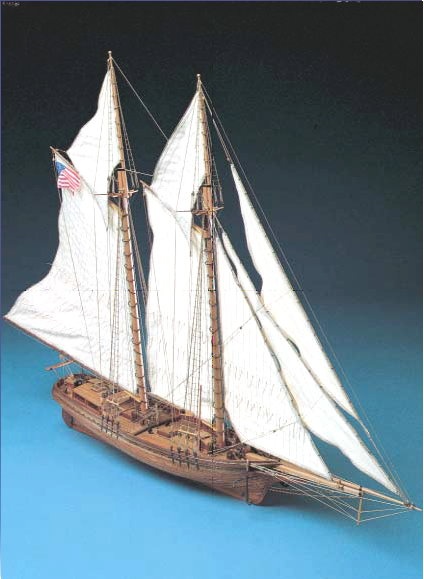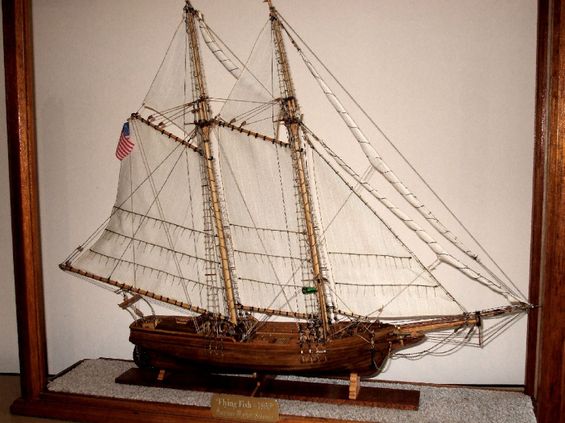Classic Ship Models 8
A PROFILE OF
American Fishing Schooners of 1860
The apogee of the schooner's development as a fighting ship is said to have been the large privateers of the Napoleonic Wars and especially those of the United States. A great shortage of cruisers and privateers led the French revolutionary government to the United States in search of such vessels. The subsequent capture of some of those vessels led to a protest from the British Government.
Other European nations bought American built schooners and made a habit of recording the lines, a practice which gives us to-day such a rich insight into the construction of smaller craft at that time. The renowned American shipbuilder, Jeremy Burnham, designed the famous two masted schooners. The "Flying Fish" was launched in Massachusetts in 1860. For over twenty years her design dominated the schooner class and was used as a model by many shipbuilders. To this day, the schooner remains a very popular class and is frequently built.
This example is estimated as a 150 ton vessel armed with ten 9 pounder guns or 12 carronades, with a deck length of almost 79 ft. Because of its unusual construction and huge sail area, the "Flying Fish" was one of the fastest vessels in the Gloucester fishing fleet. Its unique characteristics made it capable of carrying the fish catch from the Grand Banks to the ports where it was sold with the obvious advantage of being the first to the markets. The races in which the "Flying Fish" took part were very exciting, as was immortalised in the Rudyard Kipling novel "Captain Courageous".
THE MODEL
THE MODEL
"FLYING FISH"
American Fishing Schooner of 1860
The maker of this kit for "Flying Fish" is Artesinia Latina of Spain.They are notable for supplying models which cater well for the beginners as well as advanced students of the hobby. The instructions are always good with coloured photographs included for each stage of the construction. "Flying Fish" is recommended for those with limited experience and has fine lines, providing a pleasing result for the modeller.
The scale of this model is 1:50 resulting in an overall length of 720 mms and a keel to topmast height of 600 mms. The large sail area is a challenge to the inexperienced and options are provided for their settings. They can be fitted furled or flying or a mixture of both as is shown in the above photograph. Although not colourful, as we took the advice of the kit maker and varnished both the hull and the deckings, it could be painted as you wish. She is a sleek looking craft when complete. It took about three months for me to complete in 2000, during the early part of my attempts.
There are painted versions available to be viewed on the internet, but mainly other models and it is uncertain whether the actual vessel sported any of the those colours.


